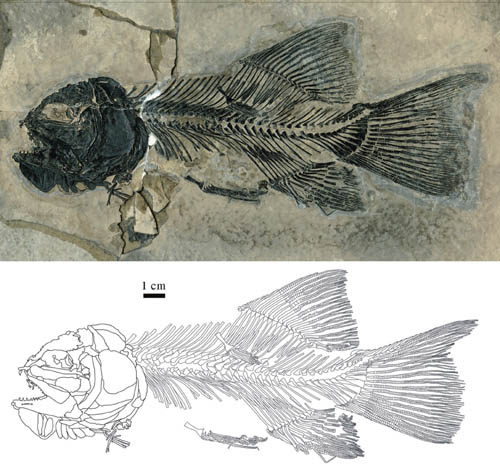Dr. JIN Fan, Institute of Vertebrate Paleontology and Paleoanthropology, Chinese Academy of Sciences, and his graduate student TAN Kai described new materials of caturoid fish--
Gymnoichthys inopinatus, from the Middle Triassic Guanling Formation at the Dawazi Village, Luoping County, Yunnan Province, China.
Gymnoichthys inopinatus is not only the first caturoid found in China, but also the earliest caturoid in the world, which is 40 million years earlier than the European and North American caturoids. Researchers re-identified its systematic position and reported in the latest issue of
Vertebrata PalAsiatica 2013(1).
Previously, caturoids were only discovered in the Jurassic of Europe and North America, and its recognized forms included
Liodesmus, the only genera of the family Liodesmidae, and
Caturus and
Amblysemius of the family Caturidae.
Gymnoichthys inopinatus was initially described by Tintori et al. in 2010, and regarded as a basal neopterygian.
G. inopinatus has only one supramaxilla and its symplectic is likely jointed with the articular, which are the identifying characters of Halecomorphi. Morever,
G. inopinatus has no scales, its vertebral centra are not ossified, and the structure and relationship of the neural arches and neural spines, as well as the shape of teeth and ural haemal spines in
G. inopinatus are quite like that of the caturoids. Hence, it is suggested to consider
G. inopinatus as a basal form of the superfamily Caturoidea.
This work was supported by the National Natural Science Foundation of China.

Fig. 1
Gymnoichthys inopinatus Tintori et al., 2010, a new specimen (IVPP V 16354) and its line drawing. (Image by TAN Kai)
